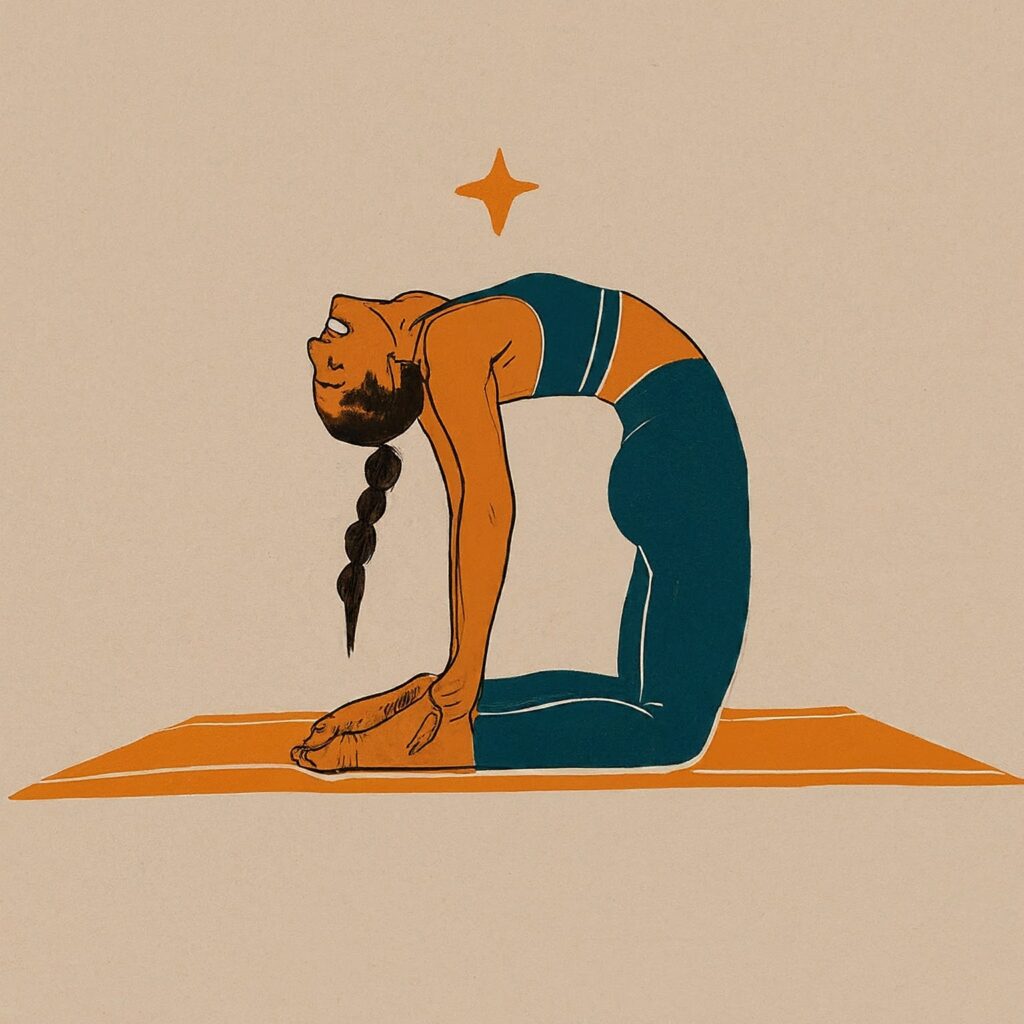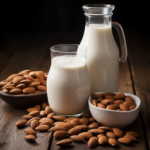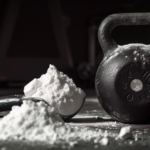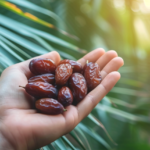Are you ready to unlock the transformative power of Ustrasana, often known as the Camel Pose? This exhilarating backward-bending yoga pose takes its name from the remarkable resemblance it bears to a majestic camel, embodying strength, flexibility, and poise. Journey with us as we delve into the intricacies of Ustrasana, unraveling its profound benefits and guiding you through its transformative practice. Prepare to awaken your inner camel and embark on a journey of rejuvenation and empowerment.
What is Ustrasana?
Ustrasana, commonly known as the Camel Pose, is a yoga posture that stretches the front of the body, particularly the abdomen, chest, and thighs. To perform Ustrasana, kneel on the mat with knees hip-width apart. As you inhale, arch your back and reach your hands back to grasp your heels. Keep the thighs perpendicular to the floor and lift the chest towards the ceiling. This pose helps improve posture, flexibility, and digestion. It also opens up the heart and lungs, promoting feelings of openness and relaxation. However, it’s essential to practice caution and listen to your body’s limits to prevent strain.
Benefits of Camel POSE (Ustrasana)
Ustrasana, the Camel Pose, is a powerful yoga posture that bestows a myriad of benefits on both the physical and mental well-being. Let’s delve deeper into the transformative effects it can bring about:
1. Enhanced Flexibility: Ustrasana, commonly known as the Camel Pose, offers significant benefits for enhancing flexibility. This yoga posture involves arching the back and stretching the front of the body, including the abdomen, chest, and thighs. Regular practice of Ustrasana can gradually increase flexibility in these areas, making it easier to bend, twist, and move with greater ease. Enhanced flexibility not only improves physical performance but also reduces the risk of injuries by allowing muscles and joints to move more freely. Moreover, Ustrasana helps release tension in the back and shoulders, promoting relaxation and overall well-being. Incorporating this pose into your routine can lead to a more supple and resilient body.
2. Improved Posture: By strengthening the back muscles and correcting postural imbalances, Ustrasana helps cultivate an upright and graceful posture. It counteracts the effects of prolonged sitting and slouching, alleviating neck and back pain, and promoting a confident demeanor. Regular practice of Ustrasana strengthens the muscles along the spine and the core, promoting a more upright and aligned posture. By stretching the front of the body and releasing tension in the shoulders and chest, Ustrasana encourages a natural, relaxed position for the shoulders and neck. Incorporating this pose into your routine can lead to better posture, reduced back pain, and a more confident stance.
3. Increased Lung Capacity: Ustrasana, also called the Camel Pose, offers notable benefits for increasing lung capacity. Ustrasana encourages deep and diaphragmatic breathing, expanding the lungs’ capacity. This leads to improved respiratory function, increased oxygen intake, and enhanced endurance. As the chest expands, it allows more space for the lungs to fully inflate with air. Regular practice of Ustrasana helps strengthen the muscles involved in breathing, such as the intercostal muscles and diaphragm, enhancing respiratory function. Improved lung capacity increases oxygen intake, promoting better circulation and overall well-being. Incorporating Ustrasana into your routine can lead to increased endurance, reduced breathlessness, and a greater sense of vitality.
4. Stress Relief: The deep stretches and gentle backward bend in Ustrasana stimulate the parasympathetic nervous system, promoting relaxation and reducing stress levels. It helps to calm the mind, release tension from the body, and alleviate anxiety. As you breathe deeply in Ustrasana, it activates the parasympathetic nervous system, promoting relaxation and reducing stress levels. The stretch in the front of the body also stimulates the adrenal glands, which can help regulate stress hormones like cortisol. Regular practice of Ustrasana can calm the mind, soothe anxiety, and uplift mood, making it an effective tool for managing stress and promoting overall mental well-being.
5. Boosted Energy Levels: Ustrasana offers excellent benefits for boosting energy levels. This posture involves arching the back and opening up the chest, which enhances blood circulation and oxygen flow throughout the body. As a result, Ustrasana stimulates the nervous system and revitalizes the body, providing a natural energy boost. Additionally, the deep breathing practiced during Ustrasana increases oxygen intake, helping to combat fatigue and increase alertness. Regular practice of Ustrasana can leave you feeling refreshed, rejuvenated, and ready to tackle the day with renewed vitality and vigor.
6. Improved Digestion: The compression and release of the abdominal organs during Ustrasana aids in improving digestion. It stimulates the digestive fire, relieves constipation, and alleviates symptoms of indigestion and bloating. This yoga posture involves stretching the front of the body, which can help stimulate the organs in the abdomen, including the stomach and intestines. By compressing and then releasing these organs, Ustrasana promotes better digestion and alleviates issues like bloating and constipation. Additionally, the gentle massage effect on the digestive organs helps to increase blood flow to the area, enhancing nutrient absorption and waste elimination. Regular practice of Ustrasana can contribute to a healthier digestive system, leading to improved overall well-being and vitality.
7. Pain Relief: Ustrasana can help relieve pain in the back, neck, and shoulders by stretching and strengthening the surrounding muscles. It can be particularly beneficial for individuals suffering from chronic pain conditions such as sciatica and tension headaches. By stretching and lengthening the muscles along the front of the body, Ustrasana promotes flexibility and reduces muscle tightness that may contribute to discomfort. Additionally, the deep breathing and relaxation experienced during this pose can help calm the nervous system, reducing sensations of pain and promoting a sense of ease and well-being. Regular practice of Ustrasana can be a valuable tool in managing and relieving various types of pain.
8. Increased Self-Confidence: Mastering Ustrasana requires patience, perseverance, and self-belief. Successfully achieving the pose can boost self-confidence and empower individuals to embrace challenges both on and off the yoga mat. As you hold Ustrasana, you may feel a sense of strength and accomplishment, boosting self-esteem. Additionally, practicing challenging poses like Ustrasana builds resilience and determination, instilling a belief in your abilities. Over time, mastering Ustrasana can cultivate a deep sense of self-assurance and inner strength, both physically and mentally. Embracing this pose regularly can help you stand tall, radiating confidence in all aspects of your life.
9. Enhanced Focus and Concentration: Ustrasana helps to clear the mind, reduce mental clutter, and enhance mental alertness. By practicing mindfulness and focusing on the sensations of the pose, you can train your mind to stay present and attentive. Regular practice of Ustrasana can sharpen cognitive abilities, improve memory, and increase productivity, making it an effective tool for boosting focus and concentration in daily life. Ustrasana demands mental focus and concentration to maintain proper alignment and balance. Regular practice can improve overall focus and concentration, enhancing performance in various aspects of life
10. Reduced Anxiety and Depression: The calming and relaxing effects of Ustrasana can help alleviate anxiety and symptoms of depression. It promotes a sense of tranquility and inner peace, allowing individuals to better manage stress and negative emotions. This posture involves arching the back and opening up the chest, which can help release tension and stress stored in the body. As you breathe deeply in Ustrasana, it activates the parasympathetic nervous system, promoting relaxation and calming the mind. The stretch in the front of the body stimulates the adrenal glands, which can help regulate stress hormones like cortisol. Regular practice of Ustrasana can uplift mood, soothe anxious thoughts, and alleviate symptoms of depression, fostering a sense of peace and well-being.
11. Spiritual Awakening: Ustrasana is believed to activate the Vishuddha chakra, also known as the throat chakra. This energy center is associated with communication, self-expression, and spiritual growth. Practicing Ustrasana can help open and balance the Vishuddha chakra, leading to enhanced self-awareness and a deeper connection to one’s inner self.As you hold Ustrasana, you may feel a deep opening in the heart center, fostering feelings of compassion, gratitude, and inner peace. The practice of Ustrasana encourages mindfulness and introspection, allowing for a deeper exploration of one’s spiritual journey. Regular practice of this pose can lead to a greater sense of connection with oneself, others, and the universe, facilitating spiritual growth and awakening.
Ustrasana is a truly holistic practice that offers a plethora of benefits for the mind, body, and spirit. By incorporating this powerful pose into your yoga routine, you can unlock its transformative potential and embark on a journey of self-discovery, healing, and empowerment.
How to do Ustrasana: A Detailed Step-by-Step Guide
Ustrasana, the Camel Pose, is an intermediate-level backbend that requires flexibility and strength in the spine, shoulders, and hips. Here’s a step-by-step guide to help you safely and effectively practice Ustrasana:
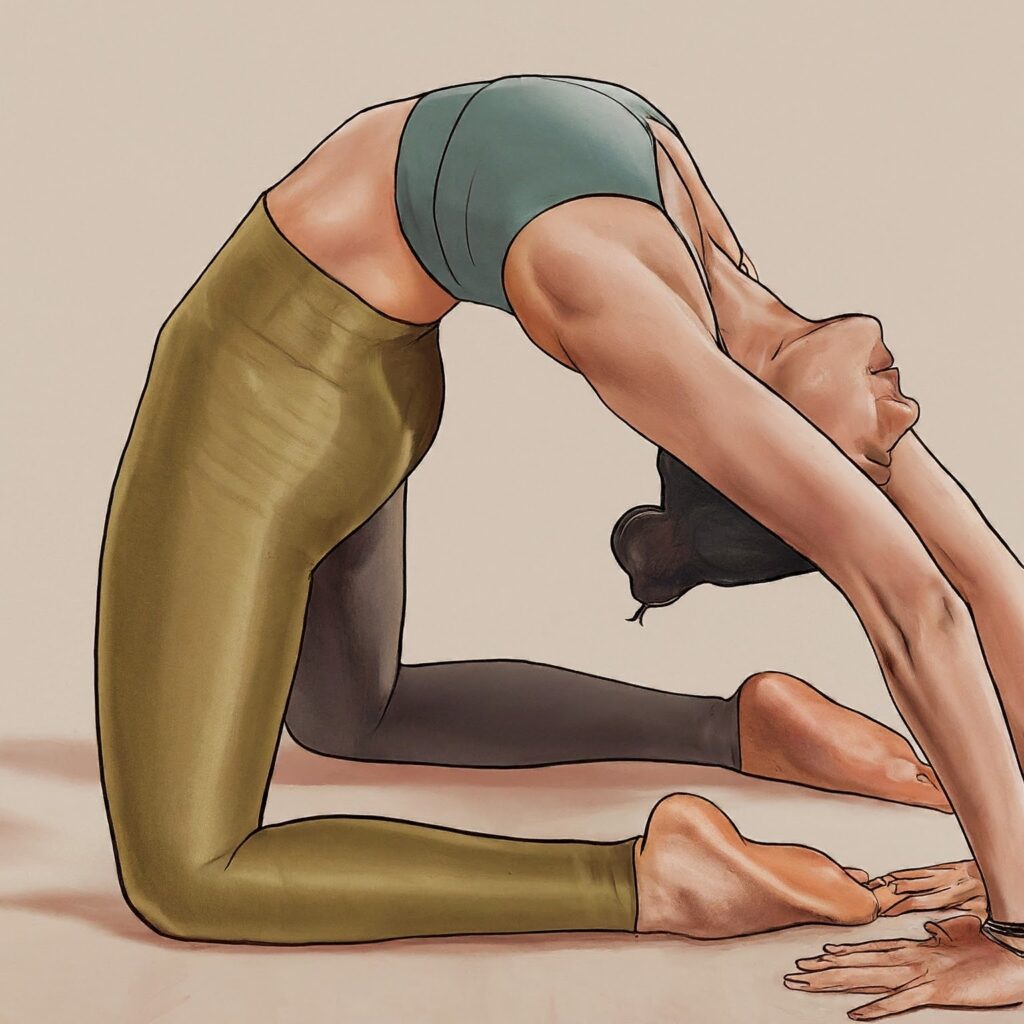
Prepare the Body:
- Begin by kneeling on your yoga mat with your knees hip-width apart and toes pointing forward.
- Ensure your ankles are aligned directly below your knees and your feet are flat on the mat.
- Inhale deeply and raise your arms overhead, palms together.
Arch the Back:
- As you exhale, slowly arch your back, pushing your hips forward and chest upward.
- Keep your spine straight and your shoulders away from your ears.
- Allow your head to tilt back gently, aligning your neck with your spine.
Reach for the Heels:
- Bend your elbows and reach your hands toward your heels.
- If you can comfortably reach your heels, gently grasp them with your hands.
- If you’re unable to reach your heels, hold onto your calves or ankles.
Engage the Core:
- Engage your core muscles to protect your lower back and stabilize your pose.
- Draw your navel in toward your spine and lift your pelvic floor muscles.
- Keep your buttocks firm and your thighs engaged.
Hold and Breathe:
- Hold the pose for 5-10 breaths, allowing your body to relax and surrender into the stretch.
- Continue to breathe deeply and evenly, focusing on expanding your chest and rib cage.
Release the Pose:
- To release from the pose, inhale and slowly lower your torso back to the starting position.
- Uncurl your spine, vertebra by vertebra, while keeping your core engaged.
- As you exhale, return to a kneeling position with your hands resting on your thighs.
Variations of Ustrasana: Exploring Different Expressions
Ustrasana, the Camel Pose, offers a variety of modifications and variations to accommodate different levels of flexibility, strength, and experience. These variations allow practitioners to explore the pose in a safe and beneficial way, while still reaping its numerous benefits.
1. Ardha Ustrasana (Half Camel Pose):
Suitable for beginners or those with limited back flexibility.
Involves bending only halfway back, keeping the torso parallel to the ground.
Hands can be placed on the thighs, knees, or blocks for additional support.
2. Parsva Ustrasana (Twisted Camel Pose):
Adds a gentle twist to the pose, deepening the stretch in the spine and shoulders.
Involves rotating the torso slightly to one side, keeping the hips square to the front.
Hands can be placed on the opposite heel or calf for balance.
3. Ustrasana with Support:
Ideal for those with lower back issues or tight hamstrings.
Involves placing a yoga block or blanket under the buttocks for support.
This variation reduces the intensity of the backbend and protects the lower back.
4. Eka Hasta Ustrasana (One-Armed Camel Pose):
A more advanced variation that requires strength and balance.
Involves raising one arm overhead while maintaining the Camel Pose.
The other hand can remain on the heel or calf for support.
5. Urdhva Mukha Ustrasana (Upward-Facing Camel Pose):
A challenging variation that requires significant back flexibility.
Involves arching the back fully and extending the arms overhead.
The head is tilted back, allowing the gaze to be directed upward.
Common Mistakes to Avoid in Ustrasana: Ensuring a Safe and Beneficial Practice
Ustrasana, the Camel Pose, is a powerful backbend that requires proper alignment and technique to avoid potential injuries and maximize its benefits. Here are some common mistakes to be mindful of when practicing Ustrasana:
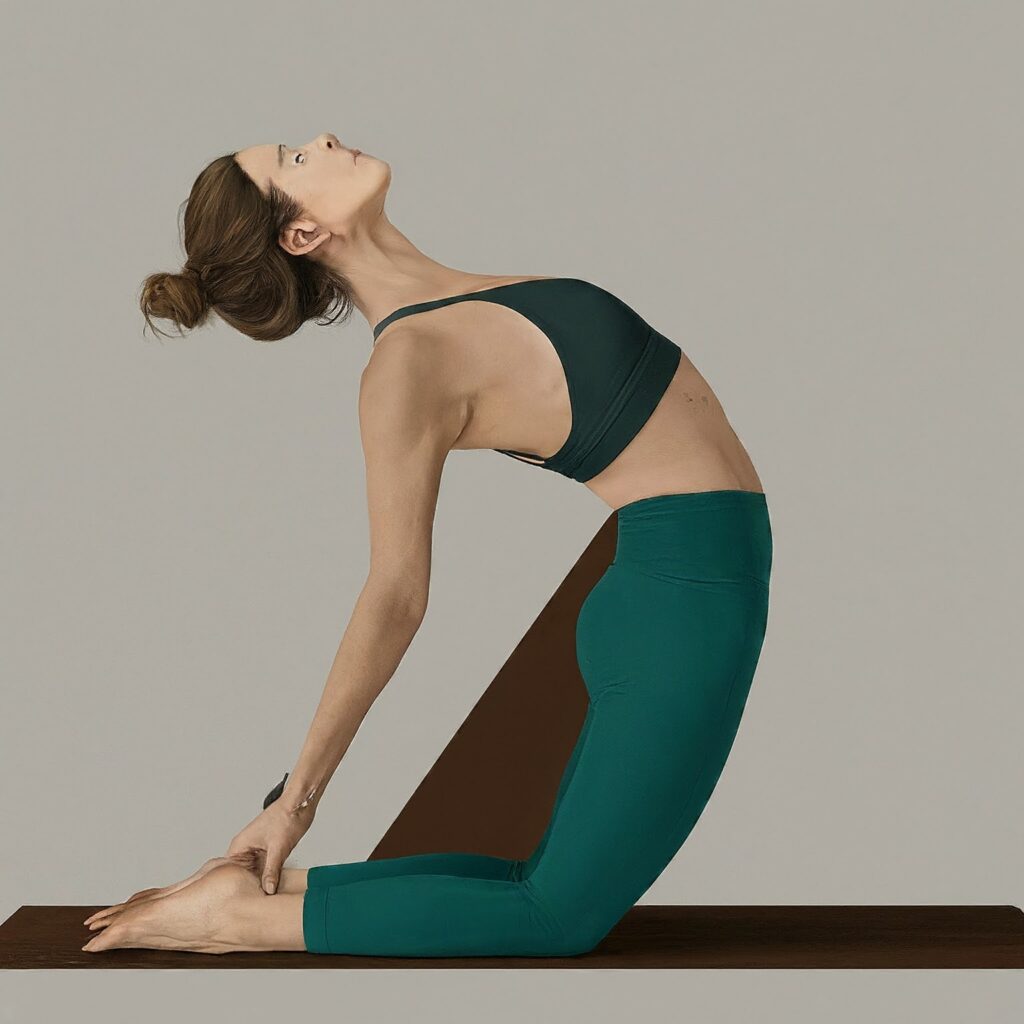
Overarching the Back:
- Avoid pushing too far into the backbend, especially if you have tight hamstrings or lower back issues.
- Keep your gaze straight ahead or slightly upward to prevent overextending your neck.
Ignoring Core Engagement:
- Failing to engage your core muscles can put strain on your lower back and increase the risk of injury.
- Draw your navel in toward your spine and lift your pelvic floor muscles to protect your back.
Misalignment of the Knees:
- Ensure your knees are aligned directly below your hips to prevent knee pain or injury.
- Avoid letting your knees buckle inward or outward.
Overextending the Neck:
- Keep your head in line with your spine and avoid tilting it too far back.
- This helps to protect your neck from strain and injury.
Rushing the Pose:
- Take your time entering and exiting the pose to avoid injury.
- Hold the pose for a comfortable duration, typically 5-10 breaths, to allow your body to relax and stretch.
Ignoring Your Body’s Signals:
- Listen to your body and come out of the pose if you experience any pain or discomfort.
- Pushing through pain can lead to injury and hinder your progress.
Practicing Too Soon After Eating:
- Avoid practicing Ustrasana on a full stomach, as this can cause discomfort and digestive issues.
- Allow at least 2-3 hours after a meal before practicing this pose.
Neglecting Warm-Up and Cool-Down:
- Warm up your body with gentle movements and stretches before practicing Ustrasana.
- After the pose, take time to cool down and stretch your back to prevent stiffness.
Forcing the Pose:
- Don’t force yourself into the full expression of the pose if your body is not ready.
- Gradually work towards deepening the backbend as your flexibility and strength improve.
Ignoring Proper Breathing:
- Maintain smooth and steady breathing throughout the pose to enhance its benefits.
- Avoid holding your breath, as this can lead to dizziness or lightheadedness.
Read Also – Yoga for Anxiety Relief
Frequently Asked Questions (FAQs):
-
what are the ustrasana benefit for health?
Ustrasana, also known as Camel Pose, offers benefits such as improved posture and flexibility, while also stretching the spine and chest for enhanced circulation and digestion.
-
How long should I hold Ustrasana?
For beginners, holding the pose for 5-10 breaths is recommended. Gradually increase the hold time as your flexibility and strength improve.
-
Can Ustrasana help reduce back pain?
Yes, Ustrasana can help relieve back pain by stretching and strengthening the back muscles, improving posture, and alleviating tension.
-
Is Ustrasana suitable for pregnant women?
No, pregnant women should avoid Ustrasana due to the potential risk of compressing the abdomen and putting strain on the lower back.
-
What are some alternative poses for those with limited flexibility?
Ardha Ustrasana (Half Camel Pose)
Supported Ustrasana (with blocks or blankets)
Bhujangasana (Cobra Pose)
Adho Mukha Svanasana (Downward-Facing Dog)

